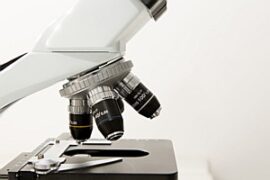In medical schools, you might think that the major study emphasis is on disease—not so. The emphasis is on how to diagnose and treat disease which is the correct pathway because medicine’s job is to diagnose and treat disease. Those who want to study disease become pathologists.
Diseases meaning lack of ease are conditions that potentially can reduce wellbeing below what is normally experienced—sometimes strikingly. According to Stedman’s Medical Dictionary, disease produces: “An interruption, cessation, or disorder of bodily function”. However, the time a disease takes to produce decreases in function is all-important because that gives one the opportunity to avoid a disease’s harmful illnesses.
When defining the status of health as the ability to function, disease sketchily emerges as a distinct diminishment of functioning. A decline of functioning heralds an illness. Producing pain is a common way the body diminishes one’s ability to function. Pain signals that one should rest to allow healing. Another way is generally feeling bad (malaise).
This definition of disease is correct but incomplete, especially considering chronic diseases. Common acute disease’s causal agents are most often infectious such as bacteria and viruses. Robert Hooke, an English genius, made one of the most important inventions in determining medical disease causation: the microscope. The microscope is invaluable in diagnosing disease as well but it diagnoses more than it determines causality.
As an example, high cholesterol does not cause heart disease; it is an “associated factor” termed medically as a risk factor. Lowering cholesterol produces less vascular disease; it does not eliminate the problem. The medical literature is chock full of studies showing that elevated cholesterol is a risk factor. One of the early studies could not be repeated today. Two Finnish mental institutions were assigned a regular diet or a low cholesterol diet for six years and the deaths from heart disease were significantly higher in the regular diet institution.1 They switched diets and observed for another six years and the figures reversed.
There are three recognized criteria to define a disease: 1) a specific causal agent (usually a bacteria or virus); 2) identifiable symptoms and signs; 3) specific anatomical alterations. Any two of these criteria define a disease.
Disease is the most important threat to our health, especially chronic or age-related diseases. To get the most from this website, one must form a good foundation, based on knowledge of health, disease, metabolism, and medicine.
1. Miettinen M, Turpeinen O, Karvonen MJ, Elosuo R, Paavilainen E. Cholesterol-lowering diet and mortality from coronary heart-disease. Lancet 1972;2:1418-9.


